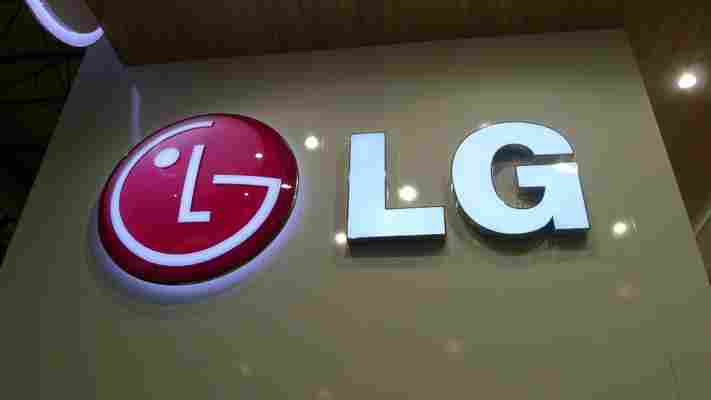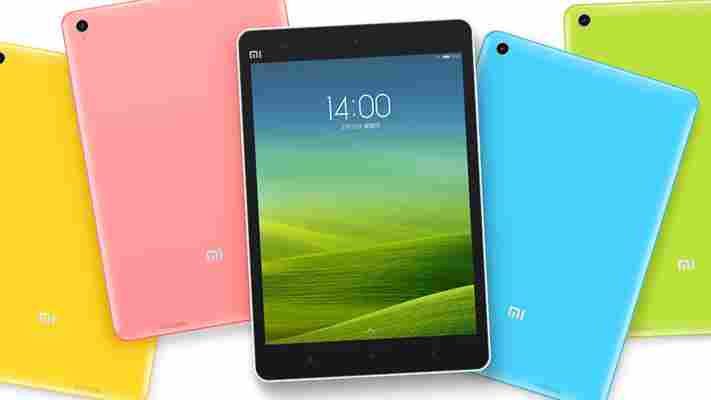Now that we’ve been testing the Xbox One in beta for the past few days, Microsoft is pulling the curtains back on press reviews of the next-gen console. The software we’ve been using is near final, though some of the issues we encountered are likely to be addressed with some last-minute polishing.

We came away impressed from our time with the console, and it helps that our experience stands in marked contrast to the severe technical woes we had with the PlayStation 4 . While we encountered several issues during our testing, Microsoft has, for the most part, fulfilled its goal of creating an all-in-one entertainment system.
The Xbox One isn’t meant to be one of the inputs on your TV, it’s meant to be the gateway for your entire living room experience, from TV, movies, streaming content to gaming. Living room setups are so varied that the Xbox One can’t possibly cover every owner’s needs, but it does manage to cover mainstream uses, though with certain limitations.
All-in-one systems tend to include compromises, and the Xbox One is no exception. It’s my personal view that the Xbox One has a stronger launch lineup than the PS4, especially because Drive Club has been delayed until next year. However, the PS4 has better processing specs, and Sony has been playing up its gaming focus.
I’m not crazy about the external design of the new Xbox One, but it does the job. The heavy use of black and grills gives it an imposing feel, though it should fit in next to your TV without sticking out.
The console is big. At roughly 7 pounds, it’s slightly larger than the Xbox 360 when it launched. Keep in mind, too, that the Xbox One has an external power brick, unlike the PS4.
Microsoft says it has made over 40 upgrades to the Xbox One controller, including improved rumble feedback and side-grip thumbsticks. The haptic feedback feels great, especially when it happens contextually in a game.
I had an issue with one of the controllers where the new Xbox button kept sticking, sometimes prompting the console or the controller to shutdown. The button is meant to be used for jumping back to the menu or switching between a snapped app, but it also pulls up the shut down menu if you press and hold (or it jams).
The seams on the new controller are also a bit rough. It’s a minor detail, but the kind of thing that you notice. Overall, I found the PS4’s DualShock 4 controller to feel more natural in the hand than the Xbox One.
Given its $499 price, the Xbox One is effectively bundling the Kinect as a mandatory accessory instead of an optional purchase. The device isn’t just a gimmick, though, as it is built into the experience from the ground up.
Similar to the PlayStation 4, the Xbox One can recognize your face and log you into your profile. Kinect can also keep track of where you’re sitting when playing in split screen. Gone are the days where you have to keep track of which controller you were using.
Several launch titles have worked to include Kinect interactions. Some of them feel pasted on, but my family enjoyed tasks like hand-feeding and making faces at animals in Zoo Tycoon.
Kinect works great with video calls on Skype. The camera automatically zooms in on you, and it can follow you as you walk around the room.
The best aspect about Kinect on the Xbox One is the deep integration of voice control. The Xbox One can be controlled almost exclusively by voice, though unfortunately you can’t use it to input text. The commands are a bit more rigid than the natural language interactions you may have come to expect from Google and Apple, but you’ll be pleasantly surprised by the number of things you can do with it.
Microsoft has tapped Bing to power the voice control, so you can search across apps, content and games to find what you’re looking for. Bing, for instance, can pull up all instances of Breaking Bad across your different apps, including Netflix and Xbox Video.
Voice recognition accuracy was good, but still disappointing. If you enable the option, you can have the Xbox passively listening in the background for the “Xbox On” command while turned off. It’s a really cool feature (though a spooky one for privacy buffs), but in my experience, it only worked about a quarter of the time. That accuracy rate was low enough that I’m inclined to skip the theatrics and just turn the console on through the controller.
It seems to me that Microsoft’s ambition here with the Kinect is to make your remote obsolete. You’ll have to decide whether you like talking to your TV, but in many cases, it’s a faster and more elegant solution than a controller or a remote.
I’ve spent time playing the first-party titles launching with the Xbox, but I’ll have to wait to discuss most of them for a later post. My overall impression of gaming on the Xbox has been good, though, and I don’t think hardcore gamers need to be afraid that the Xbox will lack for quality titles.
The openness of Dead Rising 3 is impressive, especially when you’re driving your way through hordes of zombies. The controls tended to be frustrating, as you’ll often find yourself performing the wrong actions, often with deadly consequences. In the end, I was willing to forgive the poor controls because the open world and weapon/vehicle combinations kept the game fun.
Update: I can now talk about Forza and Ryse. Forza looks incredible, and it plays great too. It’s the most impressive launch title that I’ve seen so far. If you’re into driving games at all, I’d recommend it.
Ryse turned out better than I expected, but it still has a lot of issues. While the visuals are stunning, the gameplay gets tedious, and the execution system slows down the pace of the game. You’re probably better off thinking of it as a long movie with deep interactivity.
Killer Instinct is nicely done, though I found the graphics inconsistent. The game is free to play but you’ll need to pay for extra characters, costumes and accessories. If you’re fan of the original, you’ll be happy to know that you can purchase the classic arcade game in a bundle for $39.99.
I didn’t expect to love Zoo Tycoon, but it managed to sneak into my heart. It’s a great game for the family, but it also has enough depth that you go hardcore on the simulation aspect too. The game’s available for Xbox 360, but it won’t include Kinect support or online play.
Crimson Dragon was disappointing. To be fair, I didn’t spend much time with it, but I also didn’t feel motivated to do so. Twisted Pixel’s Lococycle is wacky. The awkward live action cutscenes and repetitious gameplay aren’t really worth the $19.99 unless you’re already a fan of the developer.
We’ve had limited time with the Smartglass since it only arrived in app stores on Tuesday, but so far, it’s a solid companion app for the Xbox One. Full all-in-one remote features won’t arrive on the app until next year, but it already feels like an improvement over most remotes.
Smartglass works on Windows 8, Windows Phone 8, Android and iOS. We tried the app on Nokia’s Lumia 1520.
The main interface of the app replicates the controller’s main buttons so that you can navigate around the interface. In Internet Explorer, you can even use your phone’s virtual keyboard to type in URLs and other text. However, text input didn’t work on third-party apps like Netflix.
The Xbox’s snap feature is killer. You can snap most apps onto your main gaming session, though there are a few limitations. You won’t be able to play two games at once.
If your TV is big enough, Snap works great as a second screen. You can start watching a video in Netflix, then snap it onto the right third of your screen while you play a game.
The Xbox One includes an HDMI input for running live TV from your cable or satellite box. My setup at home uses a digital satellite signal for coaxial, so the feature unfortunately didn’t work for me. I did test it briefly at Microsoft’s offices. You won’t have full DVR functionality on your Xbox, but you can use voice control to jump around between channels or find programming and snap the TV input while you do something else.
If you’ve moved to an HDMI input for your cable box or satellite, you’ll be able to take advantage of Microsoft’s OneGuide interface for your television watching. In my case, the all-in-one promise failed to pan out.
The first time I booted up the Xbox One, it skipped the setup screen and mandatory update and I ended up trapped in a settings limbo. Resetting the device a couple times finally dropped the system into setup mode. Microsoft has released a few updates since then, so you’ll probably have an easier time of it, but you’ll still need to install a day-one update.
The Xbox One includes a nifty feature where you can tell Kinect to scan a code and then hold up a QR code for it to scan. It sure beats typing in a lengthy code.
When I scanned an Xbox Live Gold trial, the process went through properly, but the Xbox One had trouble recognizing my account. As such, I was limited from using Skype and Internet Explorer, which are Gold-only features. I contacted a Microsoft rep about the issue, but never heard back with a solution. Eventually, the Xbox let me into Skype and Internet Explorer, but it still has trouble registering that I have a Gold account when accessing installed games or saving to the cloud.
Loading times on the Xbox One were on the lengthier side. I’m willing to wait a bit for next-generation graphics to load, but prompts like “Loading menus” took too long.
Other issues like voice accuracy and the jammed controller button, which I’ve touched on in other sections, were annoying, but not nearly as showstopping as the PS4’s HDMI connection problem, which rendered the console useless for long periods of time.
Microsoft has delayed live streaming on Twitch , with a plan to add the functionality in the “first part of 2014.” Broadcasting gameplay on the PS4 turned out to be one of the more interesting additions to the system, so that’s a big blow for the Xbox.
The ability to snap a Skype video call while gaming is also missing at launch.
The Xbox One also doesn’t support external hard drives at launch. Hopefully, the company is rushing on this one. The internal storage gets eaten up quickly on the console since both disc and digital games need to be install on the HDD. I couldn’t find how much storage I had left on the drive in settings, but I’m already getting anxious just from watching the gigabyte counts on individual games I installed. Mandatory game installation, by the way, was mildly annoying, but you’ll only have to wait a couple minutes since you can play as it loads.
I had high expectations for the Xbox One, and it largely lived up to them. The main disappointment was that it doesn’t work as an all-in-one system for me because of my coaxial TV setup, but the feature should work great for most up-to-date cable and satellite customers.
While the console had some of the minor issues that I’d expect to see in the early days of a version 1.0 launch, I didn’t run into any major causes for concern.
The Xbox One’s $499 price will deter many potential customers, but Microsoft has built so much more than a gaming console. If you already have an Apple TV or other set-top box, you’ll find much of the functionality to be redundant, but the Kinect’s voice control features make it worth consolidating TV, Netflix, games and Skype all onto a single input.
When the Xbox One arrives on Friday, its combination of exclusive gaming content with a next-generation media consumption experience will make it one of the most exciting gadgets around this holiday season.
See also: PlayStation 4 review: Technical issues hold back Sony from greatness
LG announces white Nexus 4, will launch internationally starting May 29
LG confirmed today that it will be launching a white version of its popular Nexus 4 smartphone on May 29, starting with Hong Kong before a wider roll-out across Asia, North America, Europe and the Middle East in the coming weeks.

The refreshed Nexus 4 will be equipped with exactly the same hardware as its predecessor, including a 4.7-inch display with a 768×1280 resolution (318 ppi). It’s powered by a 1.5 GHz quad-core Qualcomm APQ8064 Snapdragon processor, as well as 2GB of RAM and either 8GB or 16GB of internal storage.
There’s an 8-megapixel rear-facing camera capable of shooting 1080p video at 30 frames per second, as well as a weaker 1.3-megapixel counterpart on the front. It also features the same non-removable 2100 mAh battery and doesn’t support LTE connectivity.
Perhaps most importantly, the white Nexus 4 runs stock Android out of the box, without any form of pre-installed skin, themes or apps (i bloatware) from LG.
The original Nexus 4 is still an incredibly affordable device, but faces some stiff competition these days from the Samsung Galaxy S4 and HTC One. Both have received considerable spec bumps over their predecessors – the Galaxy S3 and HTC One X – but cost considerably more than the Nexus 4 as a SIM-free version.
There’s no word on pricing for the white Nexus 4 just yet, but we’re betting it will be similar, if not the same as the black color variant.
Google also unveiled a ‘Google Edition’ of the Samsung Galaxy S4 at its annual I/O developer conference. The new variant also runs stock Android out of the box, making it a compelling choice for developers and those looking for a so-called ‘pure’ Android experience on their smartphone.
Related: The beautiful, powerful Nexus 4 proves that Google Now is the future
Xiaomi launches its first iPad challenger, the 7.9-inch Wifi-only Mi Pad, priced from $240
There have been plenty of rumors that popular Chinese smartphone manufacturer Xiaomi would be branching out into manufacturing tablets, and now the company has delivered.

Xiaomi CEO and co-founder Lei Jun took to the stage at an event in Beijing today to unveil the Mi Pad. The device is 7.9-inches, available in six colors, and it looks very much like an Apple iPad. The Mi Pad sports a 2048 x 1536 screen — from Sharp and Youda — and is powered by a 2.2 Ghz Tegra K1 processor, making it the first tablet to use the Nvidia processor.
The device includes 2GB RAM, a 16GB ROM, and will support up to 128GB via a memory expansion card. It is equipped with an eight-megapixel camera on the back and a five-megapixel camera on the front.
The Mi Pad will be retailing from 1499 yuan ($240) for a Wifi-only 16 GB version, while the 64GB is 1699 yuan (around $273). Xiaomi did not mention a cellular (or 4G) version of the tablet, and neither did the company confirm a hard launch date for the device.
The company will begin ‘open testing’ of the device in June, as it has done with other hardware products. That essentially means that it will make a beta version of the device available for sale. Initial customer feedback will help shape a full launch for the product, although Lei Jun did not specify when that might be.
Lei Jun told the audience of reporters that tablets are not easy to make, and that Xiaomi has spent as long as four years planning its first entry into the space. He claims that the Mi Pad has specs that will be equivalent to the best PC gaming experience, which gives an interesting insight into its design and development.
Much of Lei Jun’s speech before the unveiling was about Apple and the iPad, and it seems clear that Xiaomi considers the US firm to be the gold standard for tablets.
“We hope to put pressure on Apple,” Lei Jun said — statements of intent don’t come any clearer than that.
Xiaomi already laid the foundation for its tablet when it tweaked its highly-customizable MIUI firmware, which is based on Android, with a new interface design to better suit a tablet — and brought it to Google’s second-generation Nexus 7 tablet , fir the WiFi version.
The company previously said its engineers did a lot of new development and optimization to ensure the MIUI firmware is ideally re-adapted to a tablet, instead of just copying over MIUI as it is on smartphones. They applied a whole new design language to showcase content on the tablet, came up with new animation effects and re-designed the system for apps to show up perfectly so no matter whether the tablet is horizontal or vertical.
In July last year, Google announced 70 million Android tablet activations and said that one in every two tablets sold globally was Android. That figure could be even higher now. It is little wonder that Xiaomi, as it fights to take its position among the most well-known Android smartphone manufacturers, would also want a slice of that pie.
Jon Russell contributed to this piece
Note: An initial version of this post referred to the tablet as the Mi Tablet, but it is in fact called the Mi Pad. Apologies for the confusion with our translation from Chinese to English.
